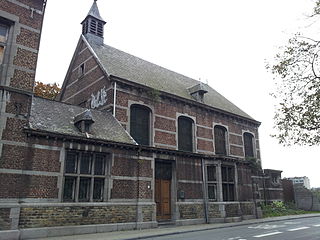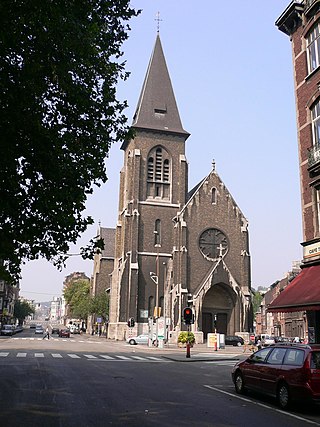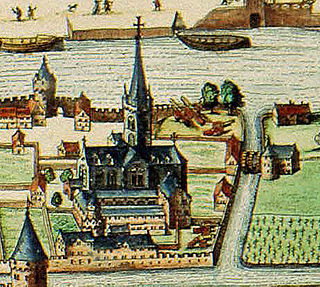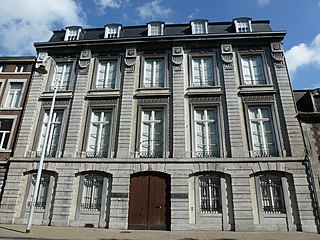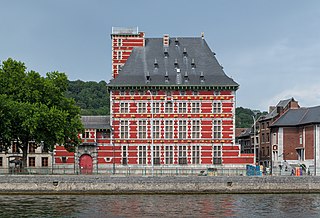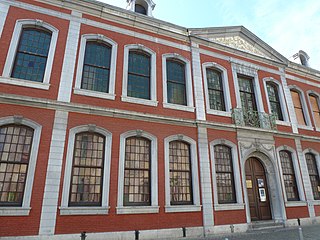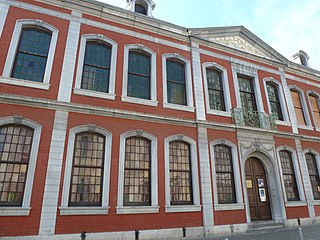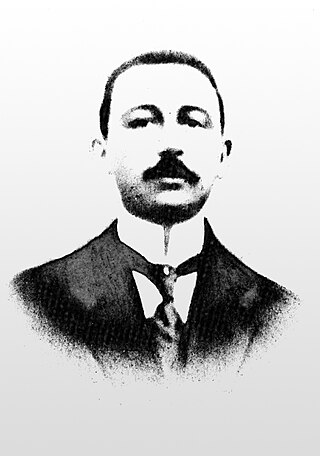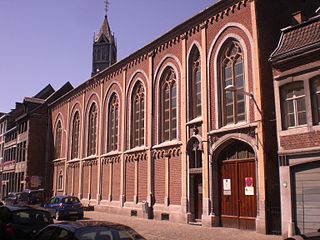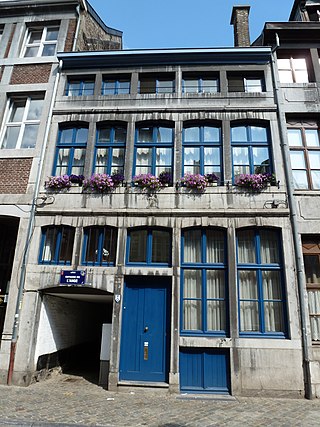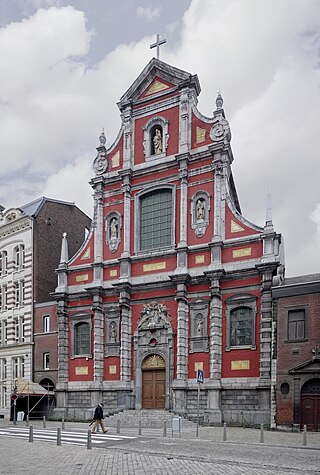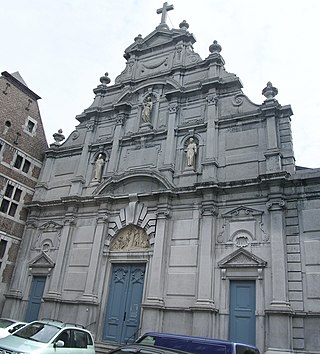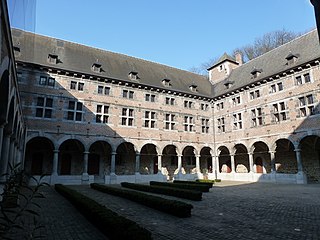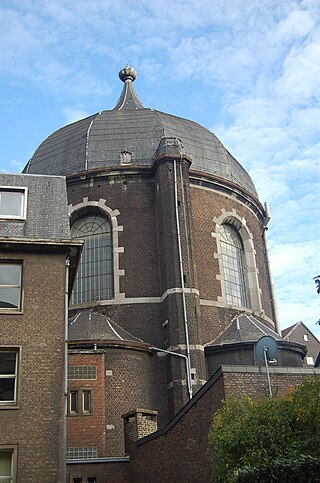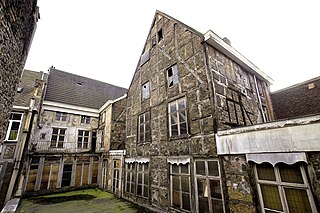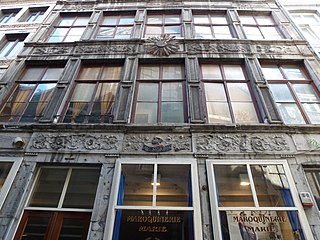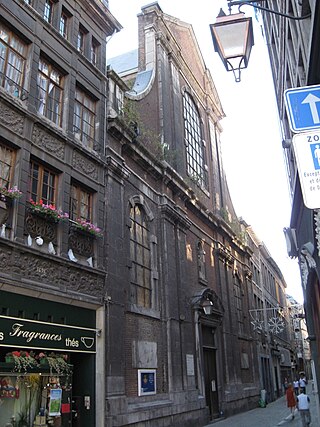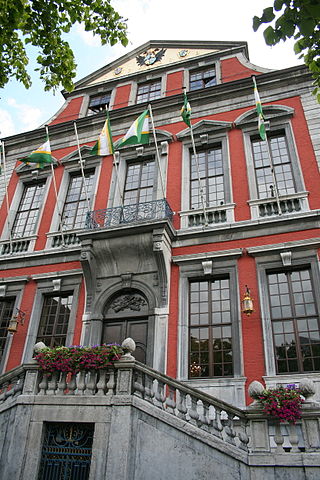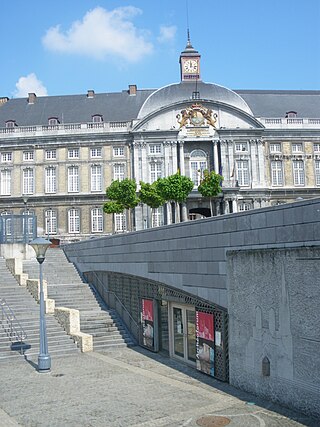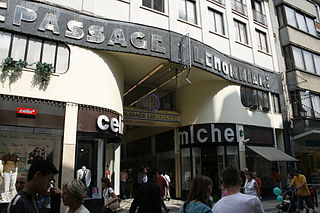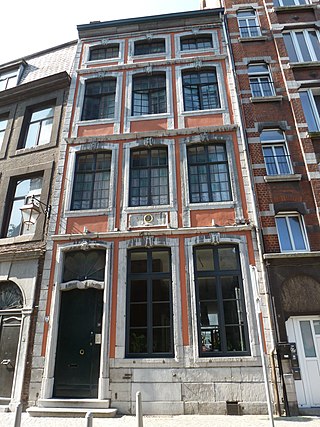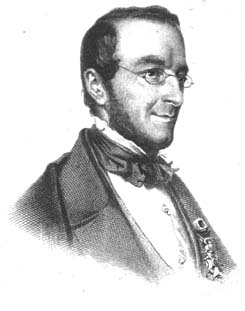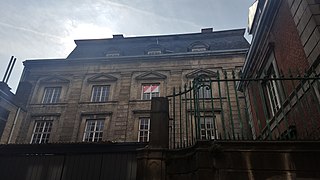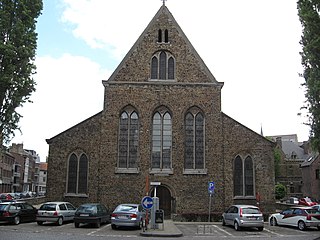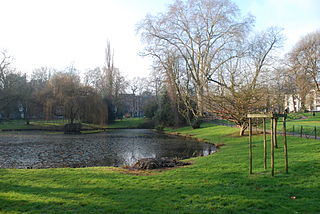Self-guided Sightseeing Tour #3 in Liège, Belgium
Legend
Guided Free Walking Tours
Book free guided walking tours in Liège.
Guided Sightseeing Tours
Book guided sightseeing tours and activities in Liège.
Tour Facts
7.6 km
95 m
Experience Liège in Belgium in a whole new way with our free self-guided sightseeing tour. This site not only offers you practical information and insider tips, but also a rich variety of activities and sights you shouldn't miss. Whether you love art and culture, want to explore historical sites or simply want to experience the vibrant atmosphere of a lively city - you'll find everything you need for your personal adventure here.
Activities in LiègeIndividual Sights in LiègeSight 1: Chapelle Saint-Augustin | Hôpital de Bavière
The Chapel of St. Augustine, commonly known as the Bavarian Chapel, is a Catholic religious building built in 1894 and located in the Outremeuse district of Liège.
Sight 2: Église Saint-Pholien
The Church of Saint-Pholien is a Roman Catholic church located in the Outremeuse district of Liège, Belgium, at the eastern end of the Boulevard de la Constitution. A first church of the twelfth century was rebuilt several times. The current building dates from 1914. The church is placed under the patronage of Saint Feuillen de Fosses.
Sight 3: Manège Fonck
The Abbey of Val des Écoliers de Notre-Dame de l'Isle in Liège is a former abbey of the Principality of Liège, founded in the thirteenth century by the Écoliers du Christ and located in the Liège district of Outremeuse, between the Meuse and the diversion. Secularized during the Liège revolution, it was converted into a hospital and then into a barracks. Since 2000, the site has been occupied by the École supérieure des arts Saint-Luc de Liège.
Wikipedia: Abbaye du Val des Écoliers de Liège (FR), Clt Website, Website
Sight 4: Hôtel de Hayme de Bomal
The Hôtel de Hayme de Bomal is a former mansion in the neo-classical style, located between Féronstrée and the Quai de Maestricht in Liège, Belgium.
Sight 5: Le Grand Curtius
Get Ticket*The Curtius Museum is a museum of archaeology and decorative arts located on the bank of the river Meuse in Liège, Belgium. It is classified as a Major Heritage of Wallonia.
Sight 6: Hôtel d'Ansembourg
The Hôtel d'Ansembourg is a former Baroque hôtel particulier in Liège, Belgium, located between Féronstrée and quai de Maestricht.
Sight 7: Musée d'Ansembourg
The Ansembourg Museum is a museum in the Belgian city of Liège. It is housed in the hôtel d'Ansembourg on Féronstrée in the historic heart of the city.
Sight 8: Dieudonné Lambrecht
Dieudonné Lambrecht (4 May 1882 – 18 April 1916) was an intelligence agent during the First World War. He was the founder and leader of the Allied intelligence network Lambrecht, which was taken over by Walthère Dewe. This White Lady network was reactivated during the Second World War under the name Clarence.
Sight 9: Collégiale Saint-Barthélemy
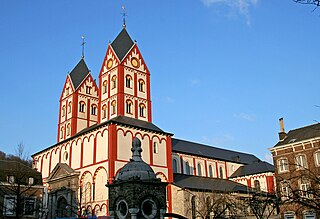
The Collegiate Church of St. Bartholomew is a Roman Catholic collegiate church in Liège, Belgium. Founded outside the city walls, it was built in coal sandstone, starting in the late 11th century and lasting until the late 12th century. It underwent, like most ancient religious buildings, modifications through the centuries. Nevertheless, the Meuse Romanesque—Ottonian architecture character of its architecture remained deeply rooted. The 18th century saw the addition of two more aisles, the opening of a neoclassical portal in the walls of the westwork, and the French Baroque redecoration of the interior. The interior of the western section has recently been restored back to the original style.
Sight 10: Chapelle des Filles de la Croix
The Capucine convent, located outside the castle in Liège, was founded in 1626, at the corner of the Impasse du Champion. The convent church was built in 1646. Sold during the Revolution, it was once again occupied by the Daughters of the Cross after having been private property. It is currently a normal school and Marie-Thérèse's middle school.
Sight 11: Maison À l'Ange d'Or
The house À l'Ange d'or is a listed building located in Liège, Belgium, at 45 rue Hors-Château.
Sight 12: Hôtel de Loets de Trixhe
The Hôtel de Loets de Trixhe is a former private mansion built in 1605 and located in Liège, Belgium, at 29 rue Hors-Château.
Sight 13: Église Notre-Dame-de-l'Immaculée-Conception
The Church of Our Lady of the Immaculate Conception, also known as the Church of the Redemptorists, the Church of the Carmelites and the Church of Saint-Gérard, is a seventeenth-century Baroque-style church located in the Hors-Château district of Liège. It was the church of the former convent of the Discalced Carmelites.
Wikipedia: Église Notre-Dame-de-l'Immaculée-Conception de Liège (FR), Heritage Website
Sight 14: Église Saint-Antoine
The Church of Saint-Antoine is a church in Liège completed in 1244. It was part of the former convent of the Miners of Liège. It is now deconsecrated.
Sight 15: Musée de la Vie Wallonne
The Museum of Walloon Life was founded in 1913. It is one of the richest ethnology museums in the Walloon Region, it is located in the former miners' convent of Liège. While its collections bring together everything that has made and still makes life in Wallonia, it offers, through its journey, an original and complete look at what Wallonia and its inhabitants are like, from the nineteenth century to the present day. A puppet theatre brings to life Tchantchès, Charlemagne, Nanesse, Roland and characters from the traditional Liège repertoire.
Sight 16: Église Saint-André
Get Ticket*The Church of Saint-André is a church in Liège located on the Place du Marché. It was from the fourteenth century until the French Revolution, with Saint-Gangulphe, the church of the commandery of the Teutonic Order of Saint-André, where the Grand Commander of the Grand Commandery of the Old Rushes of Alden-Biezen resided.
Wikipedia: Église Saint-André de Liège (FR), Heritage Website
Sight 17: Maison du Léopard
The Leopard House dating from the 15th century is one of the oldest half-timbered civil buildings preserved in almost its entirety in Wallonia. Located in Liège, Belgium, it is located between Féronstrée and Rue des Airs, a few dozen metres from the Place du Marché.
Sight 18: Hariga-Closon
The Au Moriane house is a trading house erected in 1693 and located in the historic center of the city of Liège in Belgium.
Sight 19: Église Saint-Antoine-et-Sainte-Catherine
The Church of Saint-Antoine-et-Sainte-Catherine is a baroque church located in En Neuvice in Liège.
Wikipedia: Église Saint-Antoine-et-Sainte-Catherine de Liège (FR), Website, Heritage Website
Sight 20: Hôtel de ville de Liège
The Hôtel de Ville, also known as La Violette, is the town hall of Liège, Belgium. It is located on the Place du Marché, close to the Place Saint-Lambert, in the city centre. Built in 1714 in the Mosan Baroque style, it has a very rich interior and has been listed as 'exceptional heritage of Wallonia' since 2002.
Sight 21: Le Perron
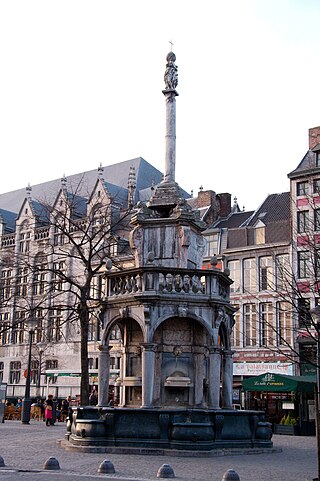
The Perron de Liège is a fountain porch located on the Place du Marché in Liège in front of the town hall. This monument, representing the freedoms of Liège, is the symbol of the city of Liège.
Sight 22: Prince-Bishops' Palace
The Palace of the Prince-Bishops is a historic building situated on the Place Saint-Lambert in the centre of Liège, Belgium. It was the residence of former Prince-Bishops of Liège and once faced the monumental Cathedral of St. Lambert. It now houses the Palace of Justice of Liège and the Provincial Palace, i.e. the government building of Liège Province.
Sight 23: Archéoforum
The Archéoforum is an archaeological museum on place Saint-Lambert in Liège in Belgium. It is centered on the ruins of Saint Lambert's Cathedral and also includes the remains of a Gallo-Roman villa as well as displaying objects from the Mesolithic onward.
Sight 24: Passage Lemonnier
The Passage Lemonnier is a covered walkway in the centre of Liège in Belgium that houses shops of all types. It connects the Vinâve d'Île to the rue de l'Université and is crossed, in its centre, by the rue Lulay-des-Fèbvres. Built between 1836 and 1838 by the architects Louis-Désiré Lemonnier and Henri-Victor Beaulieu, the Passage Lemonnier, whose name was drawn by lot between the two master builders, is the oldest covered commercial passage in Belgium; it preceded by eight years the Royal Galleries of Saint-Hubert by the architect Jean-Pierre Cluysenaar, inaugurated in Brussels in 1847.
Sight 25: Maison À l'Anneau d'Or
The house À l'Anneau d'or is a former trading house erected in 1754 and located in the historic center of the city of Liège in Belgium.
Sight 26: André Dumont
André Hubert Dumont was a Belgian geologist.
Sight 27: Musée Wittert
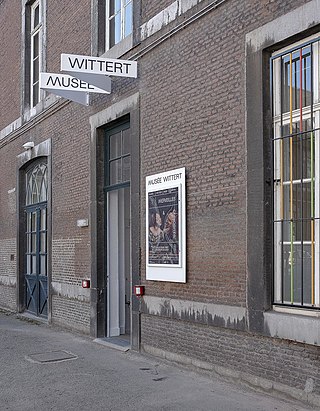
The Wittert Museum, the art museum of the University of Liège, preserves more than 65,000 works of various kinds. Located in one of the oldest wings of the university, on the Place du 20-Août in Liège, it changed its name in 2018 and was renovated. New signage has been installed and the exhibition spaces have been completely redesigned so that the semi-permanent exhibition "Wonders and Curiosities of the Art Collections of the University of Liège" can be presented alternately with temporary exhibitions.
Sight 28: Trésor de Liège
The Treasury of the Cathedral of Liège presents in ten thematic exhibition rooms a journey through the art and history of the former principality of Liège.
Sight 29: Hôtel de Crassier
The Hôtel de Crassier, sometimes spelled Hôtel de Crassiers, is a private mansion built in 1706 and located in Le Carré in Liège, Belgium.
Sight 30: Église Saint-Christophe
The Church of Saint-Christophe is a church in the Saint-Gilles district of Liège, built around 1240, and which had the particularity of being both a parish and a beguinage church.
Wikipedia: Église Saint-Christophe de Liège (FR), Website, Heritage Website
Sight 31: Jardin botanique
The Botanical Garden of Liège is the former botanical garden of the University of Liège, Belgium. Located not far from the city centre, its park offers a green setting to the inhabitants of the district. There are some rare species of trees from all continents.
Sight 32: Maison Rassenfosse
The Rassenfosse house is a neo-Mosan-Art Nouveau style architect Paul Jaspar located in Liège, Belgium.
Share
How likely are you to recommend us?
Disclaimer Please be aware of your surroundings and do not enter private property. We are not liable for any damages that occur during the tours.
GPX-Download For navigation apps and GPS devices you can download the tour as a GPX file.
